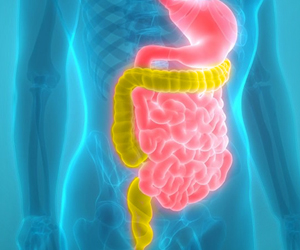A new study in mice has revealed that a high fat diet can leave the animals vulnerable to liver injury.
This happens as a high fat diet can kill regulatory T cells in the liver, allowing steatosis (simple fatty liver) to develop into steatohepatitis (fatty liver with inflammation).Non-alcoholic fatty liver disease (NAFLD), a condition related to obesity, could range in severity from simple hepatic steatosis to non-alcoholic steatohepatitis (NASH) to cirrhosis, which can lead to death. However, the progression of the disease is not well understood.
The existing hypothesis suggests two-hits are necessary. The first is prolonged over-nutrition, which causes the accumulation of fat in the liver. The second hit has been hypothesized to involve oxidative stress, mitochondrial injury or inflammatory cytokine production involving regulatory T cells (Tregs).
Tregs have recently emerged as a key player in hepatic immune regulation.
Therefore, the research team, led by Xiong Ma of Johns Hopkins University in Baltimore sought to determine their role in the pathogenesis of NASH. They hypothesized that regulation by Tregs is decreased in a fatty liver, which makes inflammation worse when the organ is exposed to secondary injury.
To examine this hypothesis, they fed adult mice a high-fat diet to induce obesity, steatosis, and insulin resistance similar to that seen in humans. (Mice in the control group were fed a normal diet.)
Advertisement
They found that the hepatic Tregs gradually decreased during the administration of the high-fat diet and, at the end of 8 weeks, the levels were less than half of those in mice who ate a normal diet. The high-fat diet induced simple steatosis, and made the mice more susceptible to the LPS. Those on the high fat diet, who had depleted Tregs, sustained greater liver injury after they were exposed to the LPS.
Advertisement
They also found that the Treg depletion reversed itself when the mice were switched from a high fat to a normal-fat diet.
'In conclusion, our study demonstrates that Tregs may play a critical role in controlling hepatic inflammation. We speculate that the depletion of Tregs may be the key event in the transition from simple steatosis to steatohepatitis,' the authors added.
Their results also suggest that strategies aimed at increasing the number and/or function of Tregs should be explored to improve the prognosis of NAFLD.
The study is published in the November issue of Hepatology, a journal published by John Wiley & Sons on behalf of the American Association for the Study of Liver Diseases (AASLD). The article is also available online at Wiley Interscience.
Source-ANI
SRM/C











